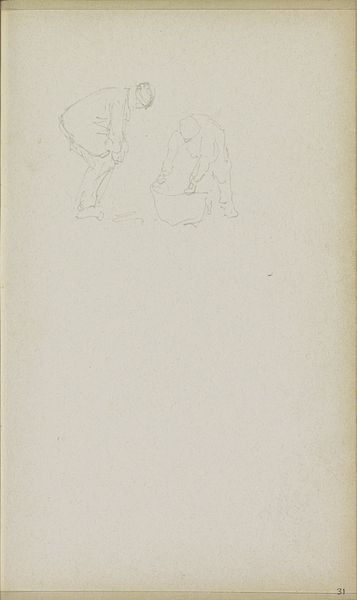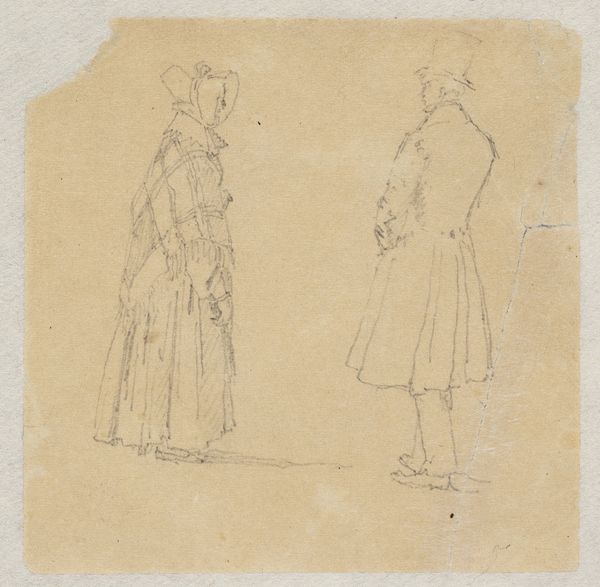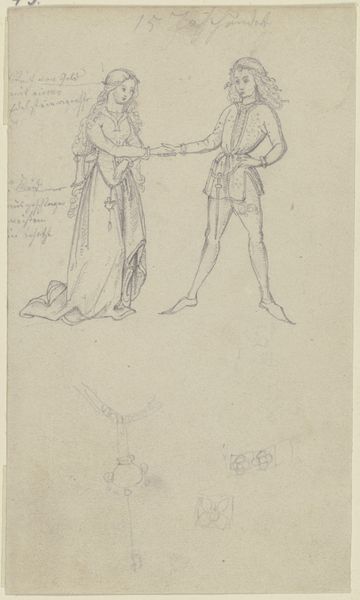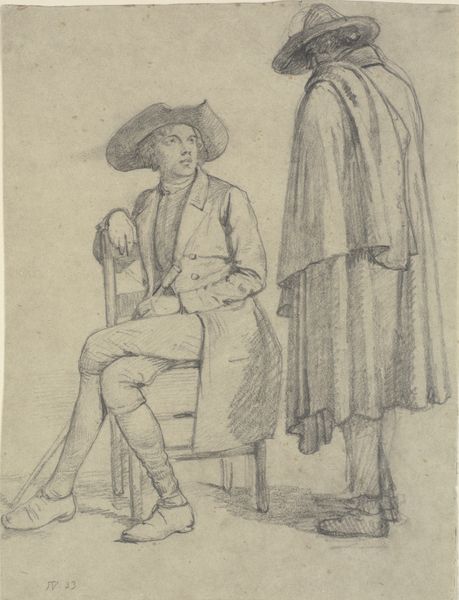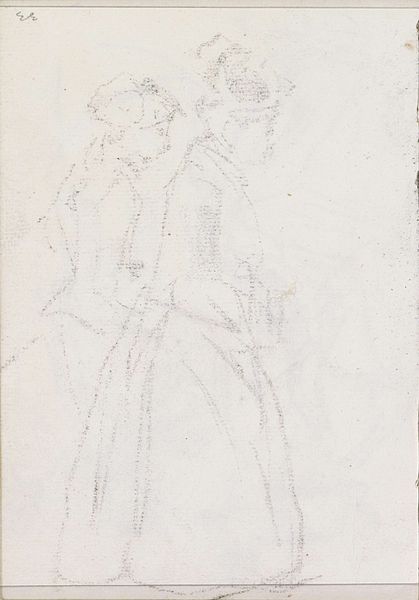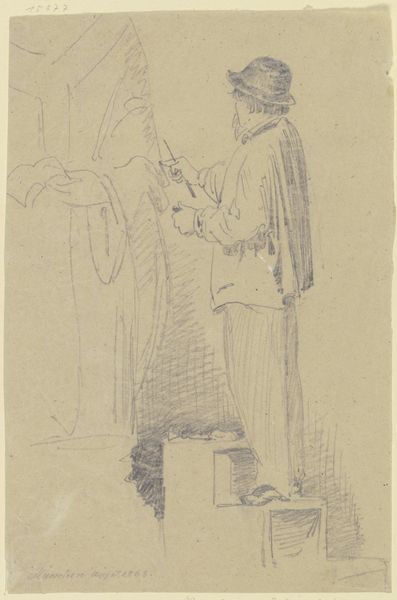
drawing, pencil
#
portrait
#
drawing
#
pencil sketch
#
figuration
#
pencil
Dimensions: height 156 mm, width 92 mm
Copyright: Rijks Museum: Open Domain
Curator: Here we have "Sketch of Two Men," a pencil drawing by Charles Rochussen, dating from between 1824 and 1894. It currently resides in the collection of the Rijksmuseum. What are your initial thoughts? Editor: Immediately, I sense a certain melancholic quality, despite the simplicity of the sketch. The tentative lines, the slightly faded appearance—they speak of transience and perhaps even a societal anxiety inherent in portraying men with that specific silhouette from that specific timeframe. Curator: It’s interesting you pick up on that sense of transience. Looking at the technique, we see Rochussen employing a rapid, almost shorthand method of notation. He’s less concerned with precise detail than with capturing the essence of form and bearing, their "habitus" if you will. Note, too, the clear linearity and structuralist implications. Editor: True, but to disregard its historical weight, only to analyze form, strips these subjects bare. This feels distinctly like a study of men, in the time of increased capitalist means and societal anxieties: a marker of shifting gender roles where appearance mattered enormously and signaled class. What statements were being projected? It isn't necessarily innocent, wouldn’t you agree? Curator: Indeed, but Rochussen leaves much open to interpretation. Consider how the very lack of precise details allows them to embody more than one archetype of bourgeois masculinity. The work becomes representative, yet resists easy categorization. Editor: And isn’t that resistance itself telling? These men, defined by their attire, by the aspirations—the sketch refuses to render them completely legible, as if suggesting that beneath the top hats and coats lie contradictions, inner turmoil and hidden histories within 19th-century patriarchy. Curator: A compelling argument. It's clear that Rochussen's seemingly simple sketch holds within it a complex interplay of form and context, making it more than a mere study of male figures but a window into societal constructs. Editor: Precisely. Hopefully, this will encourage more conversation surrounding those bygone-era themes.
Comments
No comments
Be the first to comment and join the conversation on the ultimate creative platform.



